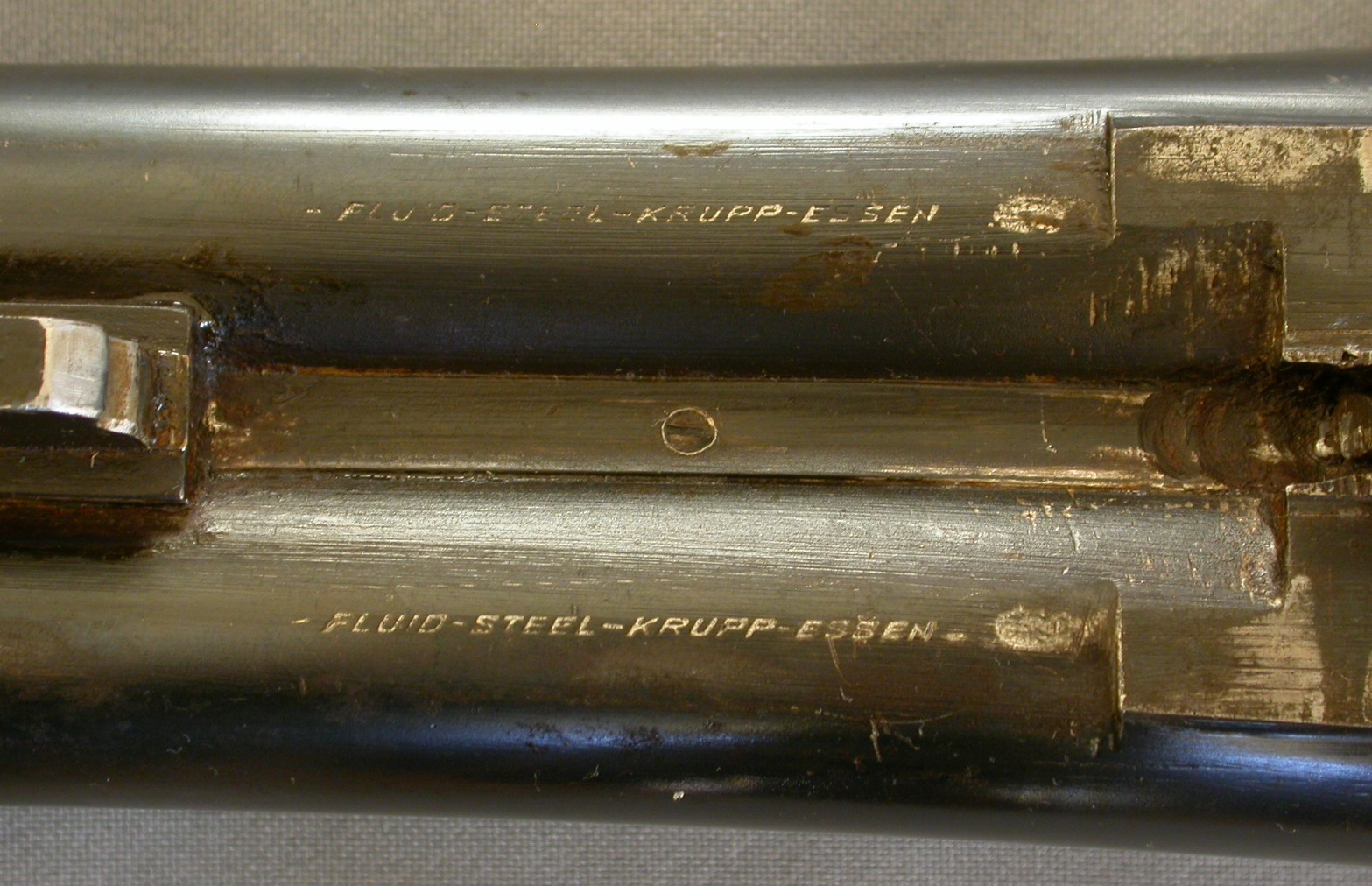Tobin Simplex Model 70 Trap Grade
Click on the images for full sized photos.
_________________________________________________
Frank M. Tobin was a Canadian born in Halifax in 1862. When in his 20's he moved to the U.S. and worked as an agent for various sporting goods dealers and firearm manufacturers. By 1903 he had had enough of the salesman's life, and with a group of local businessmen formed the Tobin Arms Company of Norwich, Connecticut. His aim was to build a quality side by side shotgun to compete with the established makers such as Parker, Lefever and Ithaca. To this end he purchased a patented design from a Californian named Clarence M. Wollam, called it the Simplex action and set about building shotguns in 12 and 16 gauge.
_________________________________________________
After 6 years of production, for reasons unknown to the author, Mr. Tobin decided to return to Canada and relocated his factory to Woodstock, Ontario. The Tobin Arms Manufacturing Company Ltd. was incorporated on August 9, 1909 and by 1910 ads were being run in "Rod and Gun in Canada" magazine. Seven grades were offered ranging in price from $20 to $160. Each grade except the lowest had the option of adding ejectors and a single trigger ($20 each). Twin ivory beads added $1. These prices were equal to, or a little higher than the competition. Tobin's ejectors were expensive by the standards of the day, and as a result most Tobin guns are equipped with extractors.
_________________________________________________
The major differences between the various grades of Tobin are fit and finish, barrel steel and engraving. With the exception of the lowest grade Leader model (which was a hammer gun) all the Tobin guns are built on the Wollam design. Most guns were colour case hardened, but Tobin also offered a "pyro oxidized" black finish. The gun featured on this page is a 12 gauge Trap Grade Model 70, a mid grade gun which retailed for between $45 and $60 with extractors and double triggers. Trap Grade guns were engraved with ducks, but the ducks differed from gun to gun. The engraving style on this one is probably best categorized as "Folk Art". Top grade guns had full coverage high quality scroll and game scene engraving and jeweled lump and rib extension.
_________________________________________________
Tobin built a quality product. Krupp steel barrels from Germany were employed in the mid and high end guns. Trojan steel was used in the lower grades, and a type of steel called De Moya was an option on the highest grades. Tobin claimed the De Moya steel to be the best, and declared that Tobin Arms would use the factory's entire output! Wollam's action design was innovative and used floating mainsprings which also acted as cocking rods. The gun looks like a sidelock but is actually a hybrid, with the sears and sear springs mounted on the side plates, and the hammers and main springs located within the frame. This design is not dissimilar in concept to the Lefever hammerless guns. If the Tobin gun has a weakness, it is that a lot of wood must be removed from the head of the stock to accommodate the lockworks. If buying a Tobin gun today, be sure to check this area for cracks.
_________________________________________________
Prosperity is hard to come by in the double gun business. Repeating shotguns such as the Winchester models 1897 and 1912, and John Browning's Auto 5 were in their ascendency. By 1916 Frank Tobin's dream was ending. The Arnold Thompson Tool Company had taken over part of the factory. Ads for the gun no longer came from Tobin Arms, but from sporting goods dealer W. H. Martin who appeared to be clearing them out. Tobin Arms surrendered its charter on December 19, 1921. An enterprising fellow by the name of G. B. Crandall took up the manufacture of Tobin guns, and produced them until at least 1930, although rumours of one gun which may have been built as late as 1951 have surfaced! Frank Tobin passed away on October 10, 1939. He will always be remembered as the man who built Canada's first shotgun factory.
_________________________________________________
The Tobin Mystery
Original text:It has been reported that Tobin serial numbers built in the United States end with number 11,089, and those built in Canada start with 11,090 and range up to the high 19,000's. In current records, however, no Canadian made guns have been located with serial numbers below about 15,125.
After some years of gathering data, several guns in the 14,000 range have been reported, none in the 13,000 range, one in the 12,000 range, two in the (high) 11,000's and one oddball with a serial number less than 9,000 bearing the Woodstock, Ontario sideplates.
It appears as if the early Canadian guns exist but in very small numbers. Where did they all go?
